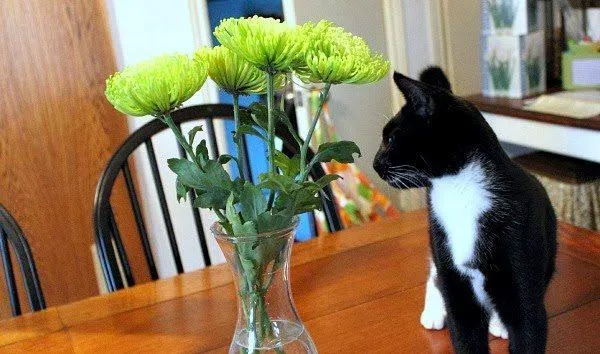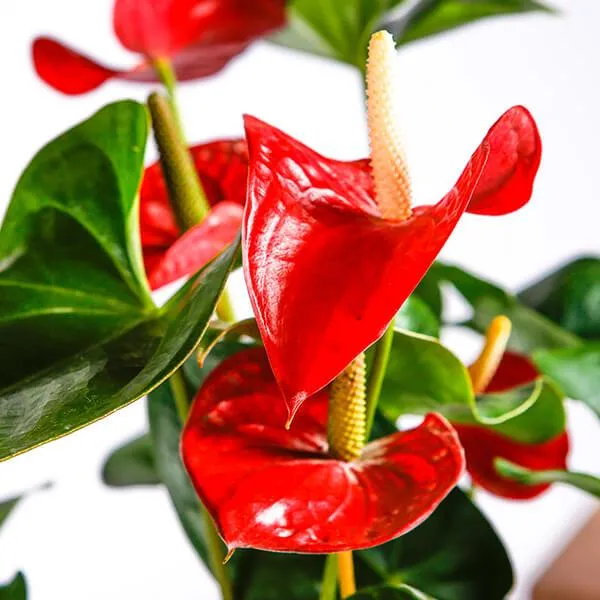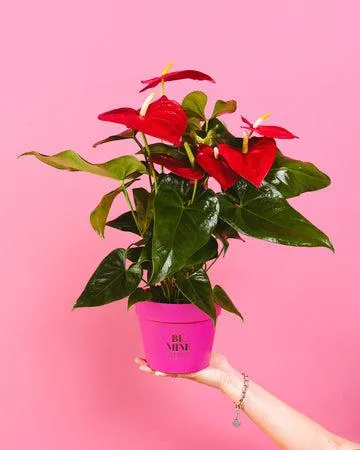Anthurium Plants: Are They Safe for Cats?
If you have a curious cat and are considering getting an anthurium plant, you’ve come to the right place. As both a longtime cat owner and gardening enthusiast, I’ve asked myself this question many times over the years. In this article, I’ll cover everything you need to know about anthurium toxicity for cats and provide tips for cat-proofing your plants.
Are Anthurium Plants Toxic to Cats?
- Anthurium plants contain calcium oxalate crystals which can cause mouth and digestive tract irritation in cats if ingested.
- The milky white sap of anthurium leaves and stems is also mildly toxic.
- However, anthurium toxicity is generally considered low risk unless large amounts are consumed.
Basically, anthuriums aren’t as poisonous as some other common houseplants like Dieffenbachia or spider plants. But their sap and crystals can still cause some nasty side effects for curious kitties like drooling, vomiting, and diarrhea. From my experience as a vet tech, it’s usually nothing that warrants an emergency visit – but it’s still not a fun experience for any cat owner!
symptoms of anthurium poisoning in cats
The main symptoms to watch out for if your cat ingests part of an anthurium plant include:
- Mouth irritation and swelling from the calcium oxalate crystals
- Drooling
- Vomiting
- Diarrhea
- Loss of appetite
- Potential kidney or gastrointestinal issues if a large amount is consumed
Symptoms usually appear within a few hours of ingestion and will typically resolve on their own within 1-2 days with supportive care at home. But it’s always a good idea to contact your vet if symptoms are severe or persistent. The good news is I’ve never seen long term health effects from minor anthurium ingestion in cats.

cat-proofing your anthurium
Now that you know anthuriums are generally low risk but still potentially unappealing for cats, here are my tips for keeping these beautiful plants safe around feline friends:
- Keep anthuriums out of reach on high shelves or hanging baskets. Cats can jump pretty darn high when they want something!
- Add sticky pads, tin foil, or upside down plant saucers beneath pots to deter climbing. Cats tend to avoid unstable surfaces.
- Trim or remove any long crimson flower spikes that could look like toy to swatting paws.
- Consider potting anthurium bulbs rather than plants if space is limited, as bulbs pose less interest.
- Give cats vertical scratching posts and interactive toys as acceptable alternatives to plant life.
From my experience living with cats, a little deterrence goes a long way. You can totally have beautiful anthuriums and a happy, healthy cat – you just gotta be smart about placement. With some training and cat-proofing strategies, even my climby, nibbly rescue cat leaves the plants alone now. It just took her realizing they weren’t as fun to play with as her toys.
real-life example
I’ll never forget the time my fluffball Scout got into the anthurium when I left the living room window open “kind of” unattended for like 5 minutes. When I came back, there were potting soil crumbs and shredded crimson petals everywhere. And poor Scout was sprawled on the rug looking absolutely miserable with bulging eyes, dripping jowls, and unhappy meows.
Anyway, I called an emergency vet line – who reassured me after some questions that she’d likely be fine at home with supportive care. But man, the stress of those first few hours of drooling and diarrhea had me seriously questioning my plant parenting skills. Lesson learned the hard way to always anticipate Scout’s ninja plant climbing abilities! Thankfully, she made a full recovery with rest and C/D food.

non-toxic anthurium alternatives for cat owners
If the risk of poisoning just isn’t worth it to you – and let’s be real, no cat parent wants to deal with that drama – here are some beautiful low/non-toxic flowering plant options that are also generally unattractive to cats:
- African violets
- Orchids
- Peace lilies
- Gerbera daisies
- Impatiens
- Caladiums
- Plumeria
- Hibiscus
All these flower with a splash of color while posing minimal harm if any accidental mouthing occurs. Remember that cat-proofing is still smart with any houseplant. But if you love crimson blooms like anthurium, these make for less stressful alternatives.
final thoughts
So in summary – anthurium plants contain toxins that can cause mild to moderate stomach upset in cats. But with the right preventative measures like placement, deterrents and enrichment for kitty, these beautiful tropical plants can totally coexist peacefully alongside feline friends. Just be prepared for some stressful hours if an “incident” does occur down the road. But as long as you have a well-stocked first aid kit and your vet’s number on speed dial, all will likely be fine in the end. What are your experiences keeping houseplants and cats – have any lessons to share? Let me know in the comments!
I hope this article has helped address all aspects of your question regarding anthurium toxicity and cats. Please let me know if you need any clarification or have additional concerns. With the right precautions, these lovely flowers don’t need to be off limits for animal lovers. Good luck and happy planting!

Anthurium Care Guide
| Care Tip | Details |
|---|---|
| Light | Anthuriums prefer bright, indirect light. East or west facing windows are idea. |
| Water | Water when the top inch of soil is dry. Do not overwater as their roots can rot easily. |
| Humidity | Anthuriums thrive in humid conditions between 50-60%. Use pebble trays or consider a humidifier. |
| Temperature | Daytime temperatures between 70-80°F and nightime no lower than 65°F. |
| Fertilizer | Feed monthly in the spring and summer with a dilute water-soluble houseplant fertilizer. |
FAQ
-
Are anthuriums toxic to cats?
Basically, anthuriums aren’t exactly suitable for kitties. Numerous parts of the flower are poisonous if ingested by felines. Several compounds in anthurium plants can result in vomiting and tummy issues for cats. So it’s best to keep anthuriums out of reach.
-
What are the symptoms if a cat eats an anthurium?
If a cat chews on or swallows parts of an anthurium, it could basically experience some not-so-fun symptoms. The cat might puke. It could also get an upset stomach with diarrhea. Traces of anthurium in the mouth or eating red berries from the plant have made some cats a little woozy too. So watch Fido closely if you suspect any nibbling!
-
Are different parts of an anthurium toxic?
Interestingly, the toxicity can vary a bit depending on the piece of the plant. Apparently, the leaves and stems have lower levels of toxins than other areas. However, the red berries and flowers hold the most potently poisonous compounds. Even small doses can cause a reaction in kitties. So it’s safer to keep all plant parts away from curious cats.
-
What should I do if my cat eats an anthurium?
If you catch your cat gnawing on an anthurium or notice signs of sickness, don’t panic – but do act promptly. Call your vet right away and take the plant with you for identification. They can assess the situation and advise on next steps. In many cases, inducing vomiting is recommended to rid the tummy of any nasty plant bits. Fluids may also be suggested. With quick care, recovery is likely – but prevention is definitely less stressful for all!

Do cats tend to find anthuriums appealing?
While anthurium leaves and blooms look stunning to us humans, cats don’t actually find them remarkably delightful. In reality, cats usually don’t exhibit strong interest in eating plants. Nevertheless, kittens and some cats might see the scarlet berries or vivid blooms as toys to bat around. More often, cats tend to ignore anthuriums. On the other hand, the attraction could rely on the individual cat and circumstances. It’s best not to take chances with toxins.
What can I do to discourage cats from chewing on anthuriums?
There are a few fairly easy things you can try if you worry a furry friend might snack on an anthurium plant. Basically, you can place the pot up high, like on a tall shelf or hanging basket well above claw-reach. You can also cover the soil with rocks or pebbles, so the roots aren’t visible. Another option is to situate it in an isolated spot away from pet traffic areas. Cats typically avoid stepping into pebbles, so that may curb temptation. Asking relatives if their cats ever sampled anthuriums could offer clues too. With a little defense, your plants should stay safe.
Are there any non-toxic alternatives to anthurium for cat owners?
Luckily, there are numerous gorgeous houseplants posing no risk to cats. Perhaps try some pet-safe options like Peace Lilies, English Ivy, Pothos, Spider Plants or Sansaviera if you adore greenery. Zz Plants, Snake Plants and Chinese Evergreens also thrive indoors and let cats relax. Or go for silk flowers and greenery for the Look without the danger. Ask at garden stores for the most cat-resistant kinds. You might be stunned by how many beautiful choices won’t harm furbabies either. With millions to select from, no need to take a chance on poisoning a precious pet!
